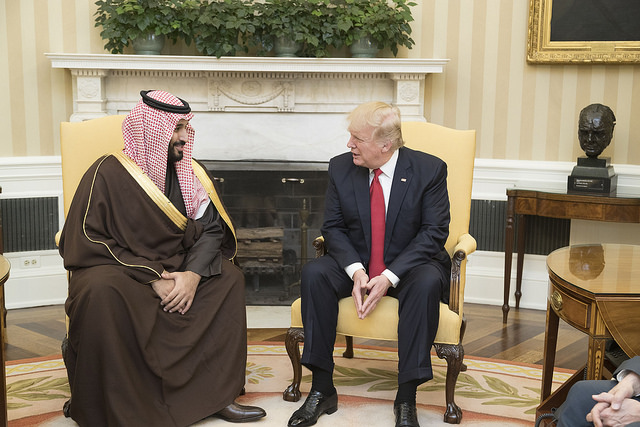
Lots of developments in the oil world.
Biggest news, I think, is the change leader in Saudi Arabia has been appointed to the position of crown prince, meaning he is first in line for the throne.
Lots of news on dropping oil prices, which are due to increasing production, primarily in the U.S.
6/22/17 – Wall Street Journal – The Saudi Shake-Up Has One Goal: Drag the Country Into Modern Era – King Salman bin Abdulaziz has appointed his son, Mohammed bin Salman, as crown prince, making him the designated successor to the throne. The previous crown prince, Mohammed bin Nayef who was in charge of security, is now in retirement.
Mohammed bin Salman is the person pushing the modernization efforts in the country, trying to move the country away from dependency on oil production and massive subsidies to the population and toward a diversified economy with widespread entrepreneurial mindset. One part of that transition is taking Saudi Aramco public.
6/21/17 – Wall Street Journal – Change in the House of Saud – Great background.
Editorial points out the issues facing the kingdom:
The Saudis face a triple challenge in falling oil prices, a youth demographic bulge and Iranian imperialism.
One of the big implications of being appointed crown prince is to remove the possible challenges to leadership from any of the 7,000 other princes in the country.
Article points out why Mohammed bin Salman took a hard-line against Qatar: that country cooperates with the west while it simultaneously funds Hamas and other terrorist groups.
5/26/17 – Calgary Herald – Oil falls below US$50 as OPEC’s renewed cuts seen as insufficient to arrest march of U.S. shale – Announcement, or rumors, that OPEC+Russia will continue production cuts has been fully discounted by the market, as indicted by prices slipping when the plan was leaked during the first day of meetings.
Article mentions what The Million Dollar Way has been saying for at least a few weeks, specifically that Saudi Arabia has reduced production but is maintaining export levels by selling off inventory.
On one hand, maintaining the same level of exports seems to be a big deal, undercutting the production drop idea.
On the other hand, liquidating inventory is the goal of the production cuts. There is such an overhang of inventory that needs to be worked off. Selling out of inventory instead of new production will pull down the inventory.
6/4/17 – The Million Dollar Way – Why I Love To Blog – Reason #4 – Article quotes from another article in the Financial Times describing an interview with the chief executive of Rosneft, the largest oil company in Russia.
In the interview the CEO indicates Rosneft is ready to increase production in case the big agreement of OPEC+Russia comes to a sudden end.
This is where the ability to read geopolitics comes into play. MDW tries to parse comments in the interview and speculates the real message is Rosneft will be watching very carefully the reaction of participants in the agreement. If prices don’t rise as expected and if producers start cutting corners on production, and if producers start trying to take market share, then Russia will quickly increase production to protect their market share.
That string of “if” and hypotheticals suggest the deal is tenuous and could collapse quickly. If things start to fray, production will increase and prices will drop further.
6/14/17 – Bloomberg – Oil Falls as U.S. Stockpiles Rise and IEA Sees 2018 Supply Surge – IEA expects that increased production from U.S. shale will more than meet all the increased demand for oil in 2018. Expectation of IEA, and the market, is for shale production increases to more than offset the production cuts from OPEC+Russia.
6/22/17 – Bloomberg – OPEC Has Few Escape Routes From Another Bear Market in Oil – Price for oil continues to slip. The production cuts for OPEC+Russia seem to be holding but there reportedly is no interest in making further cuts.
Several producers are outside the influence of OPEC+Russia: Libya and Nigeria are exempt from the OPEC cuts. Of source US shale producers are free to do as they wish.
That means production is increase outside OPEC+Russia by amounts that offset any cuts already made by OPEC+Russia.
US production hit 9.35M bopd, which is the highest level since August 2015.